Related Research Articles

The cerebral cortex, also known as the cerebral mantle, is the outer layer of neural tissue of the cerebrum of the brain in humans and other mammals. The cerebral cortex mostly consists of the six-layered neocortex, with just 10% consisting of the allocortex. It is separated into two cortices, by the longitudinal fissure that divides the cerebrum into the left and right cerebral hemispheres. The two hemispheres are joined beneath the cortex by the corpus callosum. The cerebral cortex is the largest site of neural integration in the central nervous system. It plays a key role in attention, perception, awareness, thought, memory, language, and consciousness. The cerebral cortex is part of the brain responsible for cognition.

A cortical column is a group of neurons forming a cylindrical structure through the cerebral cortex of the brain perpendicular to the cortical surface. The structure was first identified by Mountcastle in 1957. He later identified minicolumns as the basic units of the neocortex which were arranged into columns. Each contains the same types of neurons, connectivity, and firing properties. Columns are also called hypercolumn, macrocolumn, functional column or sometimes cortical module. Neurons within a minicolumn (microcolumn) encode similar features, whereas a hypercolumn "denotes a unit containing a full set of values for any given set of receptive field parameters". A cortical module is defined as either synonymous with a hypercolumn (Mountcastle) or as a tissue block of multiple overlapping hypercolumns.

An organoid is a miniaturised and simplified version of an organ produced in vitro in three dimensions that mimics the key functional, structural and biological complexity of that organ. They are derived from one or a few cells from a tissue, embryonic stem cells or induced pluripotent stem cells, which can self-organize in three-dimensional culture owing to their self-renewal and differentiation capacities. The technique for growing organoids has rapidly improved since the early 2010s, and The Scientist names it as one of the biggest scientific advancements of 2013. Scientists and engineers use organoids to study development and disease in the laboratory, drug discovery and development in industry, personalized diagnostics and medicine, gene and cell therapies, tissue engineering and regenerative medicine.

A progenitor cell is a biological cell that can differentiate into a specific cell type. Stem cells and progenitor cells have this ability in common. However, stem cells are less specified than progenitor cells. Progenitor cells can only differentiate into their "target" cell type. The most important difference between stem cells and progenitor cells is that stem cells can replicate indefinitely, whereas progenitor cells can divide only a limited number of times. Controversy about the exact definition remains and the concept is still evolving.
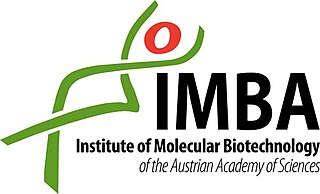
The Institute of Molecular Biotechnology (IMBA) is an independent biomedical research organisation founded by the Austrian Academy of Sciences in cooperation with the pharmaceutical company Boehringer Ingelheim. The institute employs around 250 people from over 40 countries, who perform basic research. IMBA is located at the Vienna BioCenter (VBC) and shares facilities and scientific training programs with the Gregor Mendel Institute of Molecular Plant Biology (GMI) of the Austrian Academy of Sciences and the Research Institute of Molecular Pathology (IMP), the basic research center of Boehringer Ingelheim.
The development of the cerebral cortex, known as corticogenesis is the process during which the cerebral cortex of the brain is formed as part of the development of the nervous system of mammals including its development in humans. The cortex is the outer layer of the brain and is composed of up to six layers. Neurons formed in the ventricular zone migrate to their final locations in one of the six layers of the cortex. The process occurs from embryonic day 10 to 17 in mice and between gestational weeks seven to 18 in humans.

A neural, cerebral, or brain organoid, describes an artificially grown, in vitro, tissue resembling the brain. Consensus agreement is to call these neural organoids. Neural organoids are created by culturing pluripotent stem cells, which spontaneously develop into a three-dimensional culture that can be maintained for months. The brain is an extremely complex system of heterogeneous tissues and consists of a diverse array of neurons. This complexity has made studying the brain and understanding how it works a difficult task in neuroscience, especially when it comes to neurodevelopmental and neurodegenerative diseases. The purpose of creating an in vitro neurological model is to study these diseases in a more simple and less variable space. This 3D model is free of many potential in vivo limitations. The varying physiology between human and other mammalian models limits the scope of study in neurological disorders. Neural organoids are synthesized tissues that contain several types of nerve cells and have anatomical features that recapitulate regions of the nervous system. Cerebral organoids are most similar to layers of neurons called the cortex and choroid plexus. With the addition of guidance cues, other regionalized neural organoids resemble structures similar to the retina, meninges, spinal cord and hippocampus. Stem cells have the potential to grow into many different types of tissues, and their fate is dependent on many factors. Below is an image showing some of the chemical factors that can lead stem cells to differentiate into various neural tissues; a more in-depth table of generating specific organoid identity has been published since. Similar techniques are used on stem cells used to grow cerebral organoids.
Amy J. Wagers is the Forst Family Professor of Stem Cell and Regenerative Biology at Harvard University and Harvard Medical School, an investigator in islet cell and regenerative biology at the Joslin Diabetes Center, and principal faculty of the Harvard Stem Cell Institute. She is co-chair of the Department of Stem Cells and Regenerative Biology at Harvard Medical School.
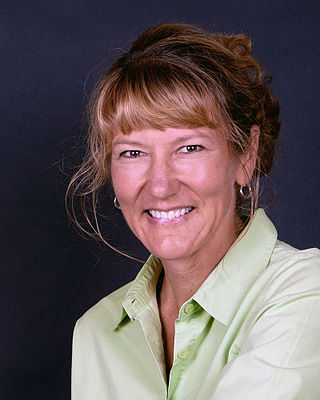
Susan McConnell is a neurobiologist who studies the development of neural circuits in the mammalian cerebral cortex. She is a professor in the Department of Biology at Stanford University, where she is the Susan B. Ford Professor of Humanities and Sciences, a Bass University Fellow, and a Howard Hughes Medical Institute Professor. She is an elected member of the National Academy of Sciences and the American Academy of Arts and Sciences.
Neurogenesis is the process by which nervous system cells, the neurons, are produced by neural stem cells (NSCs). In short, it is brain growth in relation to its organization. This occurs in all species of animals except the porifera (sponges) and placozoans. Types of NSCs include neuroepithelial cells (NECs), radial glial cells (RGCs), basal progenitors (BPs), intermediate neuronal precursors (INPs), subventricular zone astrocytes, and subgranular zone radial astrocytes, among others.
Carla Faith Bender Kim is a professor at the Department of Genetics at Harvard Medical School and a Principal Investigator at the Stem Cell Program at Boston Children’s Hospital. She is also a Principal Faculty member at the Harvard Stem Cell Institute, where she also serves as part of the Executive Committee.

Sergiu P. Pașca is a Romanian-American scientist and physician at Stanford University in California. He is known for creating and developing stem cell-based models of the human brain and applying organoids and assembloids to gain insights into neuropsychiatric disease.

Madeline Lancaster is an American developmental biologist studying neurological development and diseases of the brain. Lancaster is a group leader at the Medical Research Council (MRC) Laboratory of Molecular Biology in Cambridge, UK.
Jeffrey D. Macklis is an American neuroscientist. He is the Max and Anne Wien Professor of Life Sciences in the Department of Stem Cell and Regenerative Biology and Center for Brain Science at Harvard University, Professor of Neurology [Neuroscience] at Harvard Medical School, and on the Executive Committee and a Member of the Principal Faculty of the Neuroscience / Nervous System Diseases Program at the Harvard Stem Cell Institute.
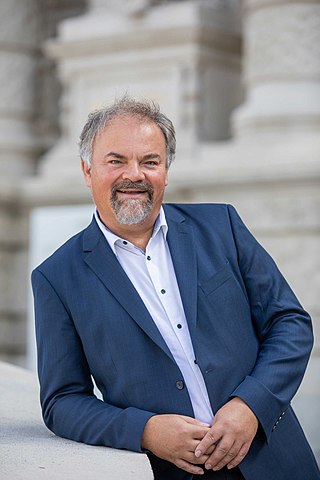
Jürgen Knoblich is a German molecular biologist. Since 2018, he is the interim Scientific Director of the Institute of Molecular Biotechnology (IMBA) of the Austrian Academy of Sciences in Vienna.
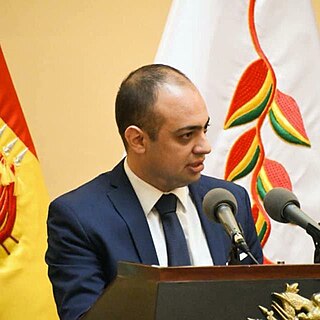
Mohammed A. Mostajo-Radji is a Bolivian scientist and diplomat. As the former Bolivian Ambassador for Science, Technology and Innovation, he has been the only Latin American science diplomat at the rank of ambassador.
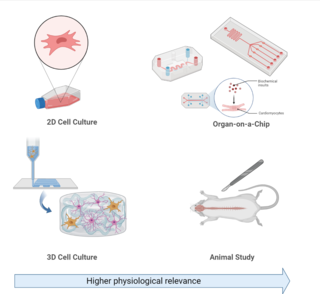
Experimental models of Alzheimer's disease are organism or cellular models used in research to investigate biological questions about Alzheimer's disease as well as develop and test novel therapeutic treatments. Alzheimer's disease is a progressive neurodegenerative disorder associated with aging, which occurs both sporadically or due to familial passed mutations in genes associated with Alzheimer's pathology. Common symptoms associated with Alzheimer's disease include: memory loss, confusion, and mood changes.
Valentina Fossati is an Italian stem cell biologist. She is a Senior Research Investigator at the New York Stem Cell Foundation. Her research is focused on developing human stem cell-based models to study the role of glia in neurodegeneration and neuroinflammation.
A myelinoid or myelin organoid is a three dimensional in vitro cultured model derived from human pluripotent stem cells (hPSCs) that represents various brain regions, the spinal cord or the peripheral nervous system in early fetal human development. Myelinoids have the capacity to recapitulate aspects of brain developmental processes, microenvironments, cell to cell interaction, structural organization and cellular composition. The differentiating aspect dictating whether an organoid is deemed a cerebral organoid/brain organoid or myelinoid is the presence of myelination and compact myelin formation that is a defining feature of myelinoids. Due to the complex nature of the human brain, there is a need for model systems which can closely mimic complicated biological processes. Myelinoids provide a unique in vitro model through which myelin pathology, neurodegenerative diseases, developmental processes and therapeutic screening can be accomplished.
An assembloid is an in vitro model that combines two or more organoids, spheroids, or cultured cell types to recapitulate structural and functional properties of an organ. They are typically derived from induced pluripotent stem cells. Assembloids have been used to study cell migration, neural circuit assembly, neuro-immune interactions, metastasis, and other complex tissue processes. The term "assembloid" was coined by Sergiu P. Pașca's lab in 2017.
References
- 1 2 "Paola Arlotta, Ph.D." hsci.harvard.edu. Retrieved 2020-03-07.
- ↑ "Da Capriva speranze contro la sclerosi". Il Piccolo (in Italian). Trieste. 15 February 2005.
- 1 2 "Paola Arlotta". HSCRB. Retrieved 2020-03-07.
- ↑ "The high mobility group protein I-C: transcriptional regulation and involvement in the formation of lipomas in transgenic mice". University of Portsmouth Library.
- 1 2 Tomassy, Giulio Srubek; Lodato, Simona; Trayes-Gibson, Zachary; Arlotta, Paola (2010). "Development and regeneration of projection neuron subtypes of the cerebral cortex". Science Progress. 93 (2): 151–169. doi:10.3184/003685010X12705764469952. ISSN 0036-8504. PMC 4226406 . PMID 20681320.
- ↑ "Neurotree - Paola Arlotta". neurotree.org. Retrieved 2020-04-30.
- ↑ "HSCRB Tenure Seminar - Paola Arlotta, PhD". hsci.harvard.edu. Retrieved 2020-04-30.
- ↑ "Paola Arlotta, Ph.D." hsci.harvard.edu. Retrieved 2020-04-30.
- ↑ "Leadership Transformation". hms.harvard.edu. Retrieved 2020-04-30.
- ↑ "New Harvard Initiative joins physical and life scientists to answer major questions". Harvard Gazette. 2018-04-17. Retrieved 2020-04-30.
- ↑ "Arlotta Lab". HSCRB. Retrieved 2020-03-07.
- 1 2 3 4 "Paola Arlotta". Broad Institute. 2013-02-07. Retrieved 2020-03-07.
- ↑ "Paola Arlotta". Simons Foundation. 2017-10-12. Retrieved 2020-03-07.
- ↑ "Paola Arlotta, PhD". New York Stem Cell Foundation. Retrieved 2020-03-07.
- ↑ "Harvard's Ledlie Prize goes to neurobiologist Paola Arlotta". Harvard Gazette. 2017-12-20. Retrieved 2020-03-07.